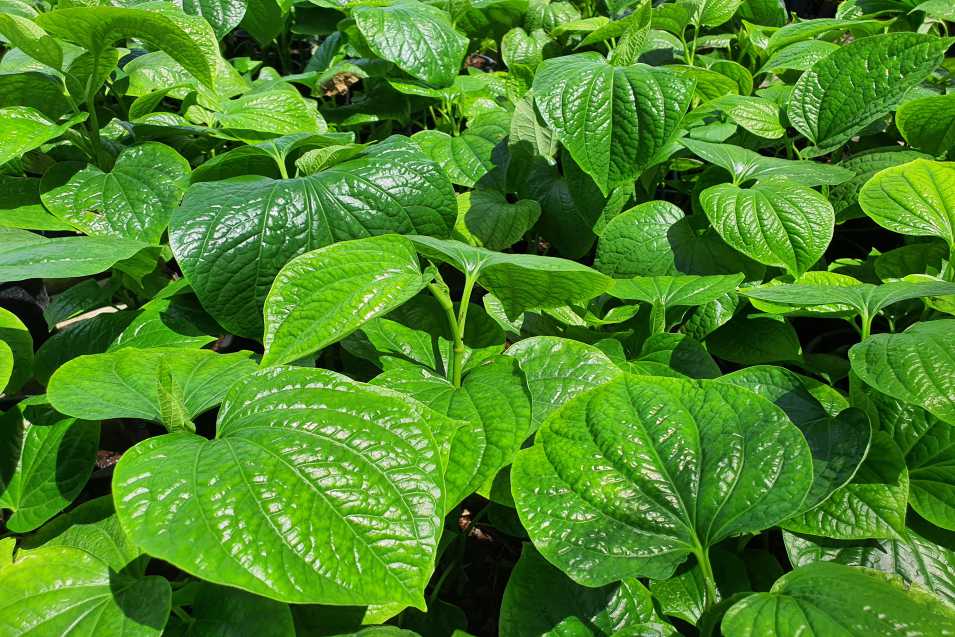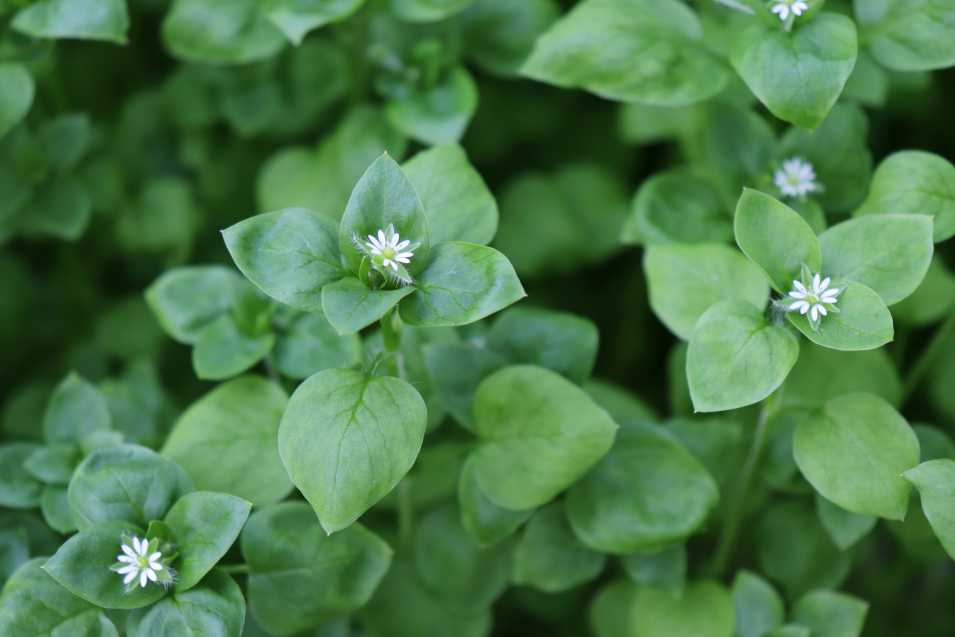Weeds with heart shaped leaves can have a significant impact on the health and appearance of gardens. Their rapid spread, nutrient competition, and disruption of aesthetics can be detrimental to desired plants. However, with proper preventive measures and control strategies, it is possible to minimize their impact and maintain a thriving and weed-free garden.
Common Weeds With Heart Shaped Leaves
As a gardener, one of the most frustrating things to deal with is weeds. They seem to pop up everywhere, often outcompeting our beloved plants for resources and taking over our gardens. One particular type of weed that I have noticed is those with heart-shaped leaves. These weeds can be found in abundance, and it’s important to identify them and understand their impact on our gardens.
One common weed with heart-shaped leaves is the common chickweed (Stellaria media). This pesky weed has small, oval-shaped leaves that are arranged in pairs opposite each other along its slender stems. It tends to spread rapidly, forming dense mats that can smother other plants.
Another common weed with heart-shaped leaves is the wild violet (Viola odorata). This weed has heart-shaped leaves with a characteristic deep green color and purple flowers. It can quickly take over lawns and flower beds if left uncontrolled.
These weeds with heart-shaped leaves can have a significant impact on our gardens. They compete with our plants for nutrients, sunlight, and water, hindering their growth and development.
Additionally, their rapid spread and dense growth can choke out our desired plants, leading to a decrease in biodiversity and overall garden health. It’s crucial to control and manage these weeds to ensure the vitality of our gardens.
| Common Chickweed | Wild Violet |
|---|---|
| This weed has oval-shaped leaves arranged in pairs opposite each other along its stems. | The wild violet has heart-shaped leaves with a deep green color and purple flowers. |
| Forms dense mats that can smother other plants. | Quickly takes over lawns and flower beds if left uncontrolled. |
Controlling Weeds With Heart Shaped Leaves
To effectively control weeds with heart shaped leaves, it’s important to employ a combination of strategies. Here are a few methods that have proven successful:
- Mulching: Apply a layer of organic mulch, such as wood chips or straw, around your desired plants. This will help suppress the growth of weeds by blocking sunlight and preventing them from germinating.
- Hand-pulling: For smaller infestations, manually pulling out the weeds can be effective. Make sure to remove the entire plant, including the roots, to prevent regrowth.
- Herbicides: If the weed infestation is extensive, selective herbicides can be used. Choose herbicides specifically formulated to target broadleaf weeds, as they will spare your desired plants.
By implementing these control measures, we can prevent the growth and spread of weeds with heart-shaped leaves in our gardens. Remember to stay vigilant and regularly inspect your garden for any signs of weed infestations. With proper management, we can ensure the health and beauty of our gardens for years to come.

Characteristics Of Weeds With Heart-Shaped Leaves
One common weed with heart-shaped leaves is the common purslane (Portulaca oleracea). This low-growing annual weed can be easily identified by its rounded leaves that taper to a point, forming a heart shape. These leaves are succulent and fleshy with a slightly shiny appearance. Although purslane may have small yellow flowers, it is primarily known for its distinctive heart-shaped leaves.
Another weed with heart-shaped leaves is the clover (Trifolium spp.). Clover is a common weed found in lawns, gardens, and pastures. It has trifoliate leaves, meaning each leaf is composed of three heart-shaped leaflets. These leaves are usually a vibrant green color and have a smooth texture. Clover also produces small white or pink flowers that are loved by bees.
- The table below summarizes some common weeds with heart shaped leaves:
| Weed | Scientific Name | Characteristics |
|---|---|---|
| Common Purslane | Portulaca oleracea | Low-growing, succulent leaves, slightly shiny |
| Clover | Trifolium spp. | Trifoliate leaves, vibrant green color, smooth texture |
These are just a few examples of weeds with heart shaped leaves, but there are many more out there. Some other common weeds with heart-shaped leaves include wild violet (Viola papilionacea), pigweed (Amaranthus retroflexus), and creeping Charlie (Glechoma hederacea).
Understanding the characteristics of weeds with heart shaped leaves can be beneficial for gardeners and landscapers. It allows them to easily identify and differentiate these weeds from desirable plants. By knowing what to look for, it becomes easier to control and manage these weeds effectively.
The Impact Of Weeds With Heart Shaped Leaves On Gardens
One of the most detrimental effects of weeds with heart-shaped leaves on gardens is their ability to rapidly spread and reproduce. These plants often produce copious amounts of seeds that can be easily dispersed by wind, animals, or even by attaching themselves to clothing or garden tools. Once these seeds find a suitable spot in the garden, they quickly germinate and establish themselves, outcompeting the desired plants for resources.
Another detrimental impact of these weeds is their ability to rob the surrounding plants of essential nutrients. Weeds with heart shaped leaves have aggressive root systems that can extend deep into the soil, extracting nutrients from the surrounding area. This can result in nutrient deficiencies for the desirable plants, leading to stunted growth, poor flowering or fruiting, and overall reduced vitality.
| Common Weeds | Characteristics |
|---|---|
| Dandelion | Yellow flowers, taproot |
| Creeping Charlie | Small purple flowers, trailing stems |
| Wild Violet | Heart-shaped leaves, purple flowers |
Furthermore, weeds with heart shaped leaves can also pose a threat to the overall appearance of the garden. Their rapid growth and ability to outcompete desired plants can lead to a crowded and unkempt garden bed. This can result in a messy and disorganized look, negating all the hard work and effort put into creating a visually appealing garden.
To minimize the impact of weeds with heart shaped leaves on my garden, I employ a combination of preventive measures and control strategies. Regularly inspecting and hand-pulling young weeds before they have a chance to establish themselves is crucial. Additionally, mulching the garden beds with organic materials can help suppress weed growth by smothering them and depriving them of sunlight.
- Keep the garden beds well-maintained and free from debris to discourage weed growth.
- Ensure the desired plants are healthy and vigorous, as they will be more capable of competing with weeds.
- Consider using natural weed control remedies, such as vinegar-based weed sprays or homemade weed-killing solutions like boiling water or saltwater.
Related Article: Weeds That Look Like Wheat
Preventing The Growth Of Weeds With Heart Shaped Leaves
Weeds with heart-shaped leaves can be quite a nuisance in gardens and landscapes, as they compete with desired plants for nutrients, sunlight, and water. However, with a proactive approach and some preventive measures, you can effectively control the growth of these pesky weeds.
1. Mulching: One of the most effective ways to prevent the growth of weeds is by applying mulch in your garden. Mulch acts as a physical barrier, preventing weed seeds from receiving the necessary sunlight to germinate. Choose organic mulch such as wood chips, straw, or shredded leaves, as they can also add nutrients to the soil as they break down.
2. Proper spacing: When planting your desired plants, make sure to provide adequate spacing between them. This allows for better air circulation and reduces the chance of weed growth. Weeds thrive in overcrowded areas where there is limited space for desired plants to establish their root systems. By providing ample spacing, you can create an environment that discourages the growth of weeds.
3. Regular maintenance: Maintaining your garden regularly is essential in preventing weeds with heart shaped leaves. Make it a habit to inspect your garden regularly and remove any small weed seedlings before they have a chance to take root and grow. Use a garden trowel or your hands to carefully uproot the weeds, making sure to remove the entire root system.
| Common Weeds With Heart Shaped Leaves | Characteristics |
|---|---|
| Dandelion | – Heart-shaped leaves with toothed edges- Yellow flowers- Taproot system |
| Clover | – Trifoliate leaves with heart-shaped leaflets- White or pink flowers- Nitrogen-fixing |
| Violet | – Heart-shaped leaves with scalloped edges- Purple or white flowers- Rhizomatous spread |
4. Weed barriers: Installing weed barriers or landscape fabric can be an effective way to prevent weeds from growing. These barriers create a physical barrier between the soil and sunlight, inhibiting the germination of weed seeds. When using weed barriers, make sure to properly anchor them and cut holes for your desired plants to grow through.
5. Weed control products: If preventive measures alone are not sufficient, you may need to consider using weed control products. Selective herbicides that target broadleaf weeds, such as those with heart-shaped leaves, can be applied according to the instructions provided. However, use these products judiciously and only when necessary, as they can also harm desired plants if not used correctly.
